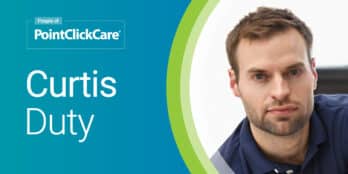
3 Ways Pharmacies Can Help Improve Medication Management
 5 min
5 min
Pharmacy, Senior Living, Skilled Nursing
The pandemic has put the long-term care segment under great financial pressure. According to a recent article in McKnight’s, the impacts on Senior Living communities across the US is considered “dire”. In most communities, occupancy is low, revenue is down, and many communities are operating at a loss. And while there is some special funding relief, it’s been limited and far less than their skilled nursing or hospital counterparts.
The pharmacies that support assisted living communities are also looking for ways to rebound and improve their pre-pandemic status quo. Progressive pharmacies are considering ways to provide more services and care that help promote the health of residents, but the pharmacies that support senior living also have a myriad of challenges to address. Challenges include:
Attracting and retaining customers
As a mature industry there are many pharmacies competing for the senior care business. Even traditional retail pharmacies are looking to get into the game. For a pharmacy considering how they hold onto their existing customers but also grow and expand, this is a challenging time. On the heels of a pandemic, how do they keep their current customers happy and attract new ones?
Doing more with less, and doing it better
Medication management and timely delivery of medications is an important service as well as a key challenge for assisted living communities. Medical complexity and acuity levels are increasing among assisted living demographics. SeniorCare.com indicates that 85% of assisted living residents require assistance with management of their meds. And a recent PharMerica article shared that assisted living residents consume an average 12-14 medications per day. To add to the challenge, in most communities the majority of caregivers are aide-level employees, resulting in limited clinical oversight. Can the pharmacy offer more services and value that can supplement the staffing gaps?
Managing quality, safety, and compliance
Paper scripts, faxing and phone calls are still prevalent in assisted living settings. Residents may use multiple retail pharmacies to fill their prescriptions and many still self-administer over-the-counter drugs that may not be charted. This lack of coordination sets up the potential for mistakes, redundant or missed medications, and increased drug interactions, any of which can lead to adverse drug events (ADEs). These events not only pose a seriously risk to the health of a resident but can also expose operators to serious problems. More scrutiny and new regulations are on the horizon for dispensing of controlled substances further complicating medication management in senior living communities, but many are not prepared to support them. Are there ways the senior care pharmacy can help these communities gain better control of medication administration and improve safety for their residents?
As the pharmacy becomes a more integral part of the senior care team, they can also influence improvements to medication management, driving efficiencies within their customer ecosystem that can be a win-win for each stakeholder.
How can pharmacies help improve and empower these communities?
- Partner with a leader in senior care – Looking to technology partners with an embedded base of customers, industry-leading solutions and channel support teams ready to help, can offer pharmacies a boost by extending their reach to a broader and deeper market, and also provide tools and technical support without having to add staff and other resources. This level of support also translates to more resources available to support their customer base.
- Automate and digitize – Reducing the amount of paper-based communication between the community and the pharmacy with automated, integrated workflows enables real-time processing of orders and refills. Delivering critical resident information to the pharmacy in real-time also supports accurate medication delivery. This level of automation is a game changer for not only the pharmacy as it cuts down on transcription and communication errors, but can alleviate manual intervention across the workflow, making it easier for the care team and improve time to dispense and administer medications.
- Enable better safety and compliance – Automation is also a first measure in improving order validation and compliance controls in the medication workflow. Synchronizing data between the pharmacy and community allows the pharmacy to have the latest information about the resident’s status, but also can help detect alarming patterns such as drug diversion. Offering systematic alerts through an automated medication management solution will also provide the community with better oversight, ultimately improving safety and resident health.
Where can pharmacies find the help they need? PointClickCare offers medication management solutions that help the pharmacy, their senior living customers, and the residents in their care. Our solutions fully integrate for bi-directional data exchange between pharmacies and senior living communities enabling real-time communication and statuses from the EHR, and ensuring timely, safe, and accurate medication ordering and administration.
June 3, 2021






